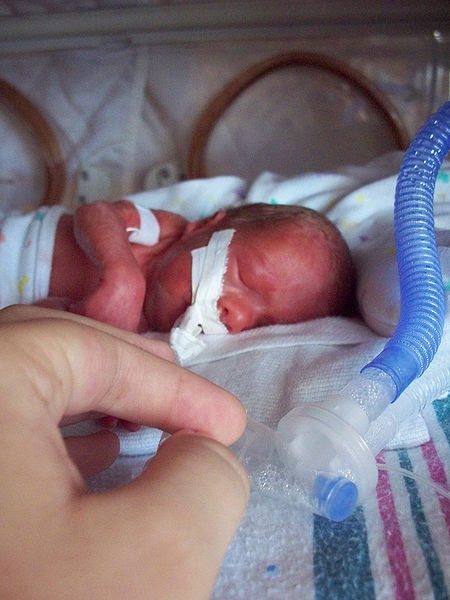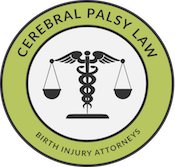What Is Premature Rupture of Membranes (PROM)?
Premature rupture of membranes (PROM) is a labor and delivery issue that occurs when a woman’s water breaks more than one hour before the onset of labor. The specific membranes that rupture during PROM include the amniotic sac (the sac in which the fetus develops) and the chorion (the outermost of the fetal membranes). Premature rupture of membranes is divided into two categories depending on when the membranes rupture:
- Prolonged premature rupture of membranes: PROM is prolonged when it occurs more than 18 hours before the onset of labor.
- Preterm premature rupture of membranes (PPROM): PROM is preterm when the membranes rupture before 37 weeks of gestation.
Premature rupture of membranes can lead to a number of birth injuries including hypoxic ischemic encephalopathy (HIE), cerebral palsy (CP), neurodevelopmental impairments, and more. If you think your premature rupture of membranes resulted in your child’s cerebral palsy or permanent disability, we encourage you to contact one of our experienced Michigan cerebral palsy attorneys today. Our Michigan cerebral palsy lawyers are available to speak with you 24/7. Call us toll-free at (888) 592-1857, fill out this online contact form, click the Live Chat tab to the left, or press the following button.
What Causes the Membranes to Rupture Prematurely?
The causes of PROM are unclear, but the condition is more likely to happen in women who:
- Experienced preterm premature rupture of membranes (PPROM) in the past
- Experienced preterm labor and delivery
- Have a vaginal or uterine infection or experience vaginal bleeding
- Smoke
- Have poor nutrition
- Have undergone previous cervical surgery
- Have had outstretching of the uterus and amniotic sac, which may occur from carrying multiple fetuses or too much amniotic fluid (hydramnios)
- Have had frequent, often unnecessary, cervical examinations late in the pregnancy
What Injuries Are Associated with PROM and PPROM?
Premature rupture of membranes may result in fetal distress and other complications. Without sterile, protective amniotic fluid, a fetus is prone to bacterial infections, loss of nutrients, preterm birth, and other complications. Complications, all of which can lead to cerebral palsy, include:
- Prolapsed umbilical cord: Movement of the fetus may force the cord to exit the uterus before the baby. Prolapsed umbilical cords often cause compressed umbilical cords, where pressure cuts of oxygen flow to the baby.
- Infection: When labor doesn’t begin right after the premature rupture of membranes, tainting of the amniotic fluid puts both the mother and child in risk infection like chorioamnionitis, Group B Streptococcus (GBS), urinary tract infection (UTI), bacterial vaginosis (BV), and herpes simplex virus (HSV).
- Malpresentation: Premature rupture of membranes often causes the fetus to change position and presentation (for example, the breech presentation), making natural vaginal delivery difficult. In this case, C-section and delivery assistance tools (like vacuum extraction and forceps) may be used to aid delivery.
- Premature birth: When labor begins right when the membranes of the amniotic sac and chorion tear open and the baby is not fully developed, the condition often results in premature birth. In fact, approximately 11% of babies in the U.S. are born prematurely, and PROM accounts for 3-4% of these births. Preterm birth often results in a large number of secondary birth injuries and complications. Undeveloped lungs in premature babies may restrict oxygen to the brain (hypoxia), resulting in lasting brain injury and cerebral palsy.
- Hypoxic ischemic encephalopathy (HIE): HIE is a condition in which the flow of oxygenated blood to a baby’s brain is severely limited. Premature rupture of membranes can cause events that cut off this important oxygen and blood flow (for example, umbilical cord interference), and the baby is often left with lasting brain damage and/or cerebral palsy.
- Death of the fetus may occur in the worst case scenarios of PROM.
What Are the Risk Factors for PROM and PPROM?
The premature rupture of membranes is more likely to occur in cases of:
- Maternal sepsis
- Umbilical cord prolapse
- Malpresentation
What Are the Signs and Symptoms of PROM and PPROM?
The clearest symptoms of the premature rupture of membranes is fluid leaking from the vagina, which signifies the water breaking. Furthermore, infection and PROM can occur together.
Signs of infection include:
- Uterine contractions
- Increased maternal heart rate and temperature
- Tenderness of the uterus
- Foul-smelling vaginal discharge
- Increased white blood cell count or a change in the pattern of white blood cell type
- An increase in the baby’s heart rate
How Is Premature Rupture of Membranes Diagnosed?
Physicians diagnose PROM by testing vaginal discharge for amniotic content—positive results signify that amniotic membranes have ruptured and that treatment should begin.
How Is Premature Rupture of Membranes Treated?
Before a treatment regimen is set, physicians must determine whether the PROM is at term or preterm.
- PROM at term: If the premature rupture of amniotic membranes occurs when the baby has reached full gestational development, spontaneous labor is usually permitted. If labor hasn’t begun within 12 hours of the PROM, physicians usually induce labor to decrease the risk of infection in the mother or baby. The doctors administer antibiotics to avoid infection transmission, and then induce labor.
- Preterm PROM (PPROM): PPROM treatment fully depends on how old and developed the baby is:
- PPROM between 34 and 37 weeks: Doctors will usually induce labor because the risk of infection is greater than the risks of premature birth.
- PPROM before 34 weeks: Treatment is more complicated and controversial for PPROM this early. If no signs of infection are present, physicians may try to delay labor with medications until the lungs are more developed. Antibiotics and steroids can be administered to speed up lung development. When the lungs are matured, the physician can induce labor. Furthermore, physicians often prescribe antenatal steroids in order to prevent the various birth injuries associated with PPROM.
Legal Help for Birth Injury from Premature Rupture of Membranes (PROM)
Michigan Medical Malpractice Attorneys
 Physicians are obligated to foresee and closely monitor for the premature rupture of membranes. Because the injuries resulting from PROM and PPROM are so severe, doctors must respond to membrane rupture in a timely manner. Any negligence on the part of a medical professional that results in injury to the mother or baby is considered medical malpractice.
Physicians are obligated to foresee and closely monitor for the premature rupture of membranes. Because the injuries resulting from PROM and PPROM are so severe, doctors must respond to membrane rupture in a timely manner. Any negligence on the part of a medical professional that results in injury to the mother or baby is considered medical malpractice.
The following incidents are examples of medical negligence:
- Physician performs frequent and unnecessary cervical examinations late in the pregnancy
- Medical professionals fail to induce labor when the risk of infection is greater than the risks of preterm delivery
- Failure to promptly assess and test for the risk factors, causes, signs, and symptoms of premature rupture of membranes
- Failure to diagnose and treat maternal or fetal conditions or infections that lead to the premature rupture of membranes
Our nationally recognized Michigan cerebral palsy attorneys have been helping families affected by PROM-induced cerebral palsy for decades. We encourage you to reach out by contacting us in any of the following ways:
We handle cases throughout the U.S.
Call our offices toll-free at (888) 592-1857
Press the Live Chat tab to the left
Complete this online contact form
Sources:
- ACOG Committee on Practice Bulletins-Obstetrics. ACOG Practice Bulletin No. 80: premature rupture of membranes. Clinical management guidelines for obstetrician-gynecologists. Obstet Gynecol 2007; 109:1007.
- Van der Ham DP, van der Heyden JL, Opmeer BC, et al. Management of late-preterm premature rupture of membranes: the PPROMEXIL-2 trial. Am J Obstet Gynecol 2012; 207:276.e1.
- Harger JH, Hsing AW, Tuomala RE, et al. Risk factors for preterm premature rupture of fetal membranes: a multicenter case-control study. Am J Obstet Gynecol 1990; 163:130.
- Casanueva E, Ripoll C, Tolentino M, et al. Vitamin C supplementation to prevent premature rupture of the chorioamniotic membranes: a randomized trial. Am J Clin Nutr 2005; 81:859.
- Spinnato JA 2nd, Freire S, Pinto e Silva JL, et al. Antioxidant supplementation and premature rupture of the membranes: a planned secondary analysis. Am J Obstet Gynecol 2008; 199:433.e1.
- Mercer BM, Goldenberg RL, Moawad AH, et al. The preterm prediction study: effect of gestational age and cause of preterm birth on subsequent obstetric outcome. National Institute of Child Health and Human Development Maternal-Fetal Medicine Units Network. Am J Obstet Gynecol 1999; 181:1216.
- Lee T, Carpenter MW, Heber WW, Silver HM. Preterm premature rupture of membranes: risks of recurrent complications in the next pregnancy among a population-based sample of gravid women. Am J Obstet Gynecol 2003; 188:209.
- Ekwo EE, Gosselink CA, Moawad A. Unfavorable outcome in penultimate pregnancy and premature rupture of membranes in successive pregnancy. Obstet Gynecol 1992; 80:166.
- Parry S, Strauss JF 3rd. Premature rupture of the fetal membranes. N Engl J Med 1998; 338:663.
- Lykke JA, Dideriksen KL, Lidegaard O, Langhoff-Roos J. First-trimester vaginal bleeding and complications later in pregnancy. Obstet Gynecol 2010; 115:935.
- Ekwo EE, Gosselink CA, Woolson R, Moawad A. Risks for premature rupture of amniotic membranes. Int J Epidemiol 1993; 22:495.
- Berkowitz GS, Blackmore-Prince C, Lapinski RH, Savitz DA. Risk factors for preterm birth subtypes. Epidemiology 1998; 9:279.
- Soraisham AS, Singhal N, McMillan DD, et al. A multicenter study on the clinical outcome of chorioamnionitis in preterm infants. Am J Obstet Gynecol 2009; 200:372.e1.
